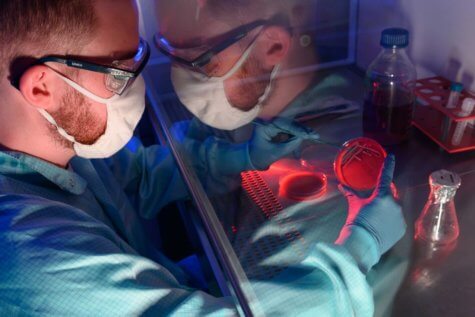JENA, Germany — When most people hear “antibiotic-resistant bacteria,” the first thought is rarely a good one. While many of us will carry these organisms and never know they’re there, some do develop devastating infections. A study by German researchers now reveals bacteria may be even more complex than anyone thought. It turns out these toxins don’t just harm, but also have the ability to trigger tissue regeneration.
A team from Friedrich Schiller University Jena says one in four people has antibiotic-resistant Staphylococcus aureus bacteria on their skin right now. This particular strain also lives on the mucous membranes of the upper respiratory tract without causing any trouble.

When Staphylococcus aureus turns into a pathogen however, it can cause inflammation, infections, and even death. According to the Centers for Disease Control and Prevention, around 120,000 S. aureus bacteria infections led to 20,000 deaths in 2017. The most common way this antibiotic-resistant bacteria enters the body and infects patients is through cuts or damaged skin.
“This happens especially when the bacteria multiply too fast, for example when a person’s immune system is weakened by an infection or injury,” adds Prof. Oliver Werz in a university release.
How does antibiotic-resistant bacteria go from harmful to helpful?
While studying molecular defense mechanisms in the human immune system, Werz and his team found the toxic makeup that causes Staphylococcus aureus to damage cells can also stimulate the healing process. This bacterial cocktail can trigger certain immune cells to produce special messenger substances. These help to reduce inflammation in the body and promote tissue regeneration. Prof. Werz now expects this discovery to play a major role in future studies on treating chronic wounds.
This study focuses on a particular toxin called “α-Hemolysin” and looked at its impact on M2 macrophages. These are immune system cells which make sure bacteria is killed during the later stages of inflammation. M2 macrophages also help remove damaged cell components and oversees tissue regeneration.
“They are therefore a kind of cellular waste disposal,” study lead author Paul Jordan explains.
The study reveals that α-hemolysin actually binds to receptor proteins on the surface of M2 macrophage cells. This is what triggers them to start sending out anti-inflammatory messenger substances, causing inflammation to subside.
Scientists were able to see this process take place in animal subjects. They also find these messenger substances have a big connection to omega-3 fatty acids. Resolvins, maresins, and protectins — which are all in the messengers — are formed by omega-3 fatty acids.
The study appears in the journal Cell Reports.
